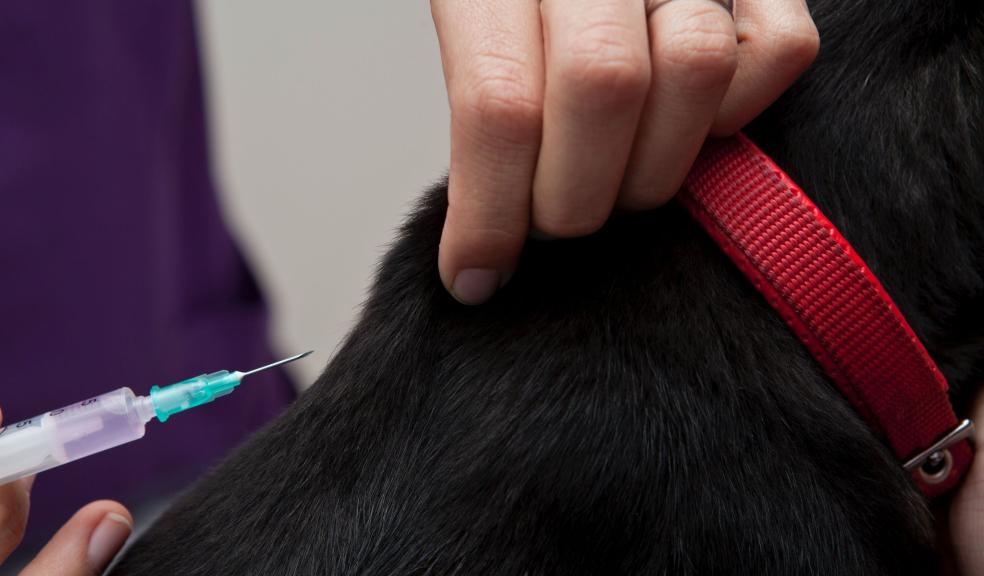
Expert advises on what to do when your insurance doesn’t cover your pet’s health problems
When your pet gets ill or is injured, it's a big concern, especially since it can be very expensive and difficult to afford. To avoid stressing you out with unexpected bills, here are 5 things to consider when it comes to covering your pet's health, according to an expert from Petplan, including tips on what to do if you find yourself in a tricky financial situation.
1. Why is it important to have pet insurance?
There are many reasons that it's important to insure your pet. First and foremost, pet insurance can help you cover the cost of veterinary bills. If your pet gets ill or is injured, the right pet insurance policy will give you peace of mind that you'll be able to cover the cost of their care, and reduce the financial stresses that come with unexpected bills. What's more, lifetime pet insurance policies will ensure that your pet is covered for any lifelong conditions they are diagnosed with after the cover started. This means that you can continue to access veterinary care for that condition throughout your pet's life.
Just like us, pets can get ill or injured at any time so it's important to make sure you have the right cover in place to be able to get them the best care you can. Not all pet insurance policies are the same, and finding the right cover from day one is really important.
Asking these questions can help you decide what cover is just right for your pet's needs:
-
Will my pet's symptoms or condition be covered for life?
-
Are there any limits per condition within the vet fee cover?
-
Does the policy cover dental illness and injury?
-
Will my premiums go up as a result of claiming against the policy?
Alongside vet fees and dental care, Petplan policies also provide cover for missing pets, diagnostic tests and scans, complementary treatments and behavioural conditions, as standard.
2. Why shouldn't pet owners rely on fundraisers to foot the bill for veterinary costs for their pets?
Veterinary costs are often sudden and unforeseen, or ongoing. If your pet needs immediate care, you won't want to wait before you are able to take them to the vet and, whilst it might seem like a good idea, fundraising for your pet's care could take a very long time. Your pet's condition could get worse during this period, which risks prolonging your pet's distress, as well as increasing the costs of veterinary care.
What's more, you cannot rely on people to donate to your pet's care fund and you may quickly find yourself out of options if you don't receive the donations you need.
Furthermore, some treatments are required over the longer term. Whilst fundraising may work over the short term, perhaps to cover the cost of an initial operation, it is rarely viable over the longer term for ongoing care and medications.
If you would struggle to pay an unexpected vet bill, it's always best to take out a pet insurance policy to alleviate some financial concerns.
3. What should you do if your current pet insurance plan doesn't cover the extent of your pet's treatment? Is fundraising a viable option then?
All pet insurance policies have a vet fee limit in place. Some also have additional limits hidden within the small print of your policy documents. Make sure you understand what medical conditions your policy covers, and for how much and how long before committing to a policy.
Unfortunately, if your existing policy does not cover your current vet bills, switching providers for a different policy won't help and the new policy will not be able to cover the current costs. This is because the current symptoms (as well as any previous ones) will be labelled as pre-existing – even if your pet has recovered from the illness that caused them.
Again, whilst there's nothing to stop you fundraising for your pet, it's important to remember that this can take time and is not a failsafe method. You could be prolonging your pet's distress or even putting them in danger by not seeking veterinary help sooner.
4. Are there any medical conditions that aren't covered by pet insurance?
There are various different types of pet insurance cover. The four main types are:
-
Accident-only
-
Time-limited
-
Maximum benefit
-
Lifetime
As the name suggests, accident-only cover applies to conditions caused by an accident, such as a road-traffic accident or ingesting something they shouldn't. These types of policy will not cover you for illnesses or diseases.
Whether you purchase a time-limited, maximum-benefit or lifetime cover policy, you'll need to understand the exclusions that may be placed on your particular policy – these are costs that your pet insurer will not cover. When you take out a policy on a perfectly healthy puppy, kitten or baby rabbit, there are unlikely to be any exclusions on your policy.
However, if your pet has shown symptoms of a condition and/or has been treated for an illness or injury, these conditions may not be covered on a new policy as they are now referred to as a pre-existing condition. A pre-existing condition could be placed on your existing policy on renewal, or on a new policy if you switch providers. Note that a pre-existing condition doesn't mean that the cause of the symptoms has been diagnosed. If your pet has received treatment for a limp for example, even though the exact cause of that limp was never diagnosed, your new insurer is unlikely to cover any costs related to limping on your policy. If your pet is already insured before the limp started then your insurer should cover costs related to diagnosing or treating it, provided they fall within your vet fee limits and have not already been excluded.
Pre-existing symptoms and conditions are a common cause of declined claims, so it's important to read your insurance documents carefully when switching or renewing your policy.
Depending on your insurance provider, a time-limited policy may offer cover for 12 months from when your pet first exhibited that symptom or condition. On other policies, such as Petplan's Essential policy, your pet is covered for 12 months after starting treatment, covering vet bills up to £3,000. Many pet owners who have insured their pet using a time-limited policy assume that they have one year of cover from when they start claiming. This means that they sometimes consent to costly investigations and treatments assuming they are covered because they haven't claimed yet.
Sometimes a pet owner will only realise a symptom or condition is excluded when their claim is declined by the insurer, because they check a pet's medical records to see whether they've previously suffered from these symptoms. If this has happened more than a year ago, this claim will be declined.
This does not happen, however, when a pet has been insured continuously via a lifetime policy. This is by far the major advantage of taking out one of these policies when your pet is young and perfectly healthy. Most pet insurers also don't cover routine vaccinations, parasite control, microchipping and neutering. These are all essential parts of responsible pet ownership so you'll need to budget for these separately.
5. If you can't afford pet insurance, where should you turn?
Whilst it does add an additional cost to your monthly outgoings, a good quality pet insurance policy is the best way to ensure you're financially supported if something does happen to your pet, as vet fees can be surprisingly expensive.
However, if you are really struggling to foot the bill, there are some charities you can turn to for help. PDSA offers means-tested veterinary support to some pet owners; to qualify for their support you need to be receiving certain benefits, such as housing or council tax support, and live within the catchment area of a PDSA centre. The Blue Cross operates a similar scheme and the RSPCA offers reduced-cost vet care to pet owners who meet their criteria.







